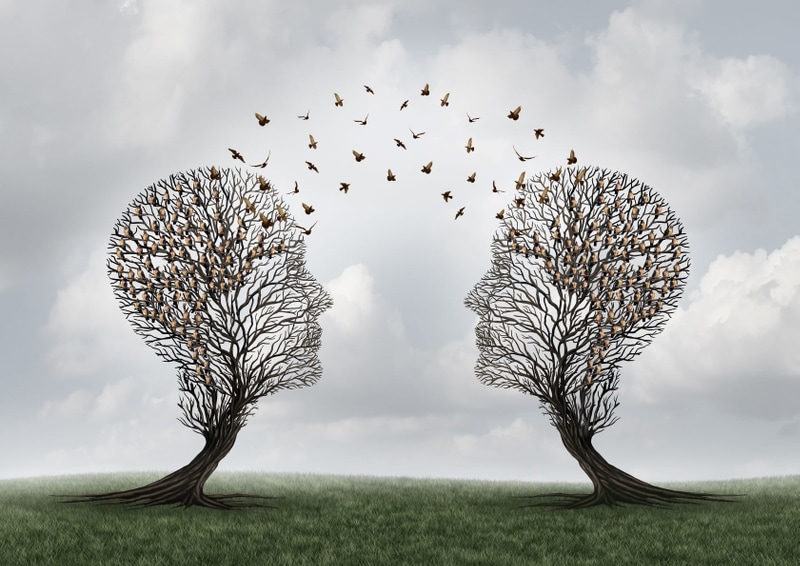You know how when you see someone smile, you smile too? Or when you see someone crying, you feel their sadness? It is caused by an incredible phenomenon called mirror neurons. This article unpacks how to leverage mirror neurons to develop high-performing teams.
Mirror neurons came into the public sphere through the book Mirroring People, The Science of Empathy and How We Connect with Others, by Marco Iacoboni.
Richard Saavedra, a University of New Hampshire researcher, described the power of mood to spread and “infect” others as “one of the most robust phenomena I have ever seen, and it’s all unconscious.”

What are Mirror Neurons?
Mirror neurons are specialized cells in our brains that play a crucial role in our ability to empathize and understand the actions, intentions, and emotions of others. Interestingly, these neurons respond to emotional experiences. When we feel emotions like joy, fear, anger, or sorrow, our mirror neurons activate. This response is mirrored when we witness others experiencing these emotions.
For instance, if we see someone feeling sad, our mirror neurons trigger a similar feeling within us, fostering a sense of empathy. This process is automatic and instinctive, allowing us to understand and share the emotional states of others without consciously thinking about it.
Intentions: the hidden side of communication
People communicate on two different levels. One is the basic mechanics of communication we know - the content of the message, the voice tone, the body language and the context in which we are communicating.
But we also communicate by reading subtle nuances in the facial expressions of who we are communicating with. According to the research, this is our brain trying to interpret the other party’s intentions. Intentions add a “4th dimension” to communication by triggering the exact same areas of the brain in the receiver as if they were experiencing the emotions themselves.
For example, I see you clearly upset and crying and I comfort you. As you communicate with me I see the pain I, your eyes and other facial expressions. My mirror neurons trigger the exact same areas of my brain, as if I were the one upset. Through this mechanism, I can empathise with you. The fascinating point is that I am not just observing you; I am part of the same experience.

Why do we do this?
One theory is that for one human to understand another’s emotions, we must have experienced that emotion. In other words, the brain is attempting to build emotional literacy in a just-in-time way. Another theory is that this also allows us to learn about our own emotions by experiencing others emotions as if they were ours.
As a species, we have evolved by working closely in groups with the emotions each of us experience impacting the emotions of all of those around us. We are essentially a collective social-emotional network. Our group setting impacts our emotional growth.
How to leverage mirror neurons for your teams
Two techniques you can use to apply this knowledge with your teams are self-awareness and curiosity.
Self-Awareness
Being mindful of how your behaviour impacts others is a critical skill for effective groups.
When you understand your own emotions, reactions and biases, you're less likely to misinterpret the behaviours of others. This leads to more empathetic interactions and healthier teams.
Self-awareness also helps encourage an understanding of the diversity of human experiences and perspectives and enables us to see beyond our viewpoint and appreciate the feelings and motivations of others.
When team members are self-aware, they tend to be more open and authentic, which fosters trust. High levels of trust in a group create a psychologically safe environment where members feel comfortable taking risks, making mistakes, and being creative. This is a vital aspect of a high-performing team.
Curiosity
Curiosity is another brilliant skill that helps build the ability to understand others' intentions. Curiosity serves as the bridge that connects diverse thoughts and perspectives. It encourages us to delve beyond the surface level of conversations.
When we approach interactions with genuine curiosity, we open ourselves to truly hearing and understanding what others are expressing, beyond just their words. This deep level of engagement is crucial for meaningful communication, as it allows for a fuller comprehension of the context, emotions, and nuances that shape each individual's messages.
Curiosity encourages us to ask insightful questions, seek clarification, and explore the motivations and feelings behind what is being communicated. This not only enhances our understanding but also conveys to others that their thoughts and experiences are valued and respected, fostering a sense of connection and trust.
Conclusion
The remarkable power of mirror neurons reveals a profound truth about human interaction and emotional connectivity; we are all highly connected. By understanding and harnessing this, we can significantly enhance the performance and cohesion of our teams.
Self-awareness and curiosity emerge as pivotal tools in this endeavour, empowering us to create environments where empathy, understanding, and genuine connection thrive.
Self-awareness allows team members to be cognizant of their own emotions and how these influence others, leading to more empathetic and constructive interactions. It cultivates a culture of trust and psychological safety, essential for high-performing teams.
Curiosity drives us to explore and understand the intentions and emotions behind our colleagues' actions and words, fostering deeper connections and more effective communication.
Together, these skills enable teams to leverage the power of mirror neurons effectively. They create a dynamic where team members are not just working alongside each other but are emotionally attuned and deeply connected.
As we continue to explore and understand the intricacies of human emotions and how they shape our interactions, the insights gained from the phenomenon of mirror neurons offer a valuable pathway to building stronger, more resilient, and more effective teams.
Behaviours are values in action. If you want to change your organisation, then live the values you seek. Let the contagious nature of mirror neurons do some of the heavy lifting to spread these behaviours, building upward spirals of behaviour.
